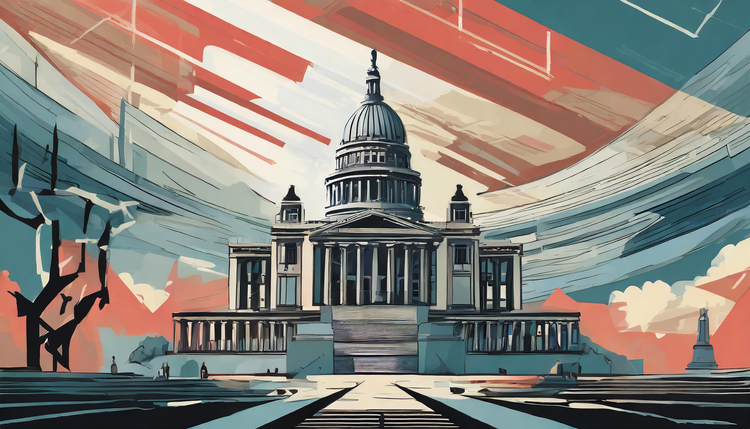America’s Boom Produced Trump
Donald Trump hates NAFTA. Really, really hates it. He has famously called it the “worst trade deal maybe ever signed anywhere, but certainly ever signed in this country.”
Like many politicians, Trump blames NAFTA for gutting the American industrial base. NAFTA certainly made it easier to outsource production to lower-cost Mexico, but was the US-Canada-Mexico trade deal the death knell for American trade?
Hardly. Outsourcing production to low-cost countries started decades before NAFTA was signed in 1994.

The shift
What accounts for such a dramatic shift? Why, starting in the 1970s, did the US shift from a goods-based economy to one specializing in selling services?
Two significant economic shifts were happening simultaneously.
The first was happening far from American shores.
Countries — especially those called "emerging" — were rapidly developing production capabilities. Between 1985 and 2008, emerging countries doubled their share of the global economy. Like America in the industrial era, these countries started their path to prosperity with carbon-intensive, low-cost production. So as emerging countries joined the global economy, American businesses outsourced low-skill production to other countries for a fraction of the cost.
At the same time, American businesses became the best in the world at exporting high-skill expertise. Instead of selling American-made products, the US economy shifted to selling American-made services. Service exports include transportation (sea and air), healthcare, education, insurance, and all forms of business expertise. Starting in the 1980s, US firms provided the logistical, financial, legal, and technological infrastructure to an increasingly wired, interconnected world.
Much of this advance would be what we now call innovation. And it delivered staggering results. Between 2000 and 2018:
- The US increased its trade in services by 3-times
- The US GDP tripled to over $20 trillion
People first
But the world is made up of people, not economic numbers. In the short run, someone had to feel the pain of globalization. In the US, workers were the ones who took it on the chin. Since 2000, the US has lost 4 million trade-enabled jobs to China.
Once thriving American cities — and the communities that sustain them — were gutted. St. Louis is down 65% from its peak population. Detroit is down 64%; Cleveland is down 58%; and Pittsburgh is down 65%.
Why is this decades-long trend relevant today?
Because many of the hardest-hit areas are in Missouri, Michigan, Ohio, and Pennsylvania — all swing states that will have disproportional influence in picking the next Commander in Chief.
In 2012, Barack Obama won Michigan, Ohio, and Pennsylvania (lost Missouri). In 2016, Donald Trump turned all four into Republican wins.
How did Trump turn blue states red?
He made a simple, targeted pledge.
We are bringing back our factories, we are bringing back our jobs, and we are bringing back those four beautiful words: MADE IN THE USA! pic.twitter.com/grABSrYUBX
— Donald J. Trump (@realDonaldTrump) April 13, 2018
Unfortunately, Trump's pledge of four beautiful words turned out to be just that: words.
Production lags
In reality, American manufacturing is in a recession. Trump has made it worse, as recently described by the Federal Reserve:
A positive effect from import protection is offset by larger negative effects from rising input costs and retaliatory tariffs
The hollowing out of America's manufacturing base is not Trump's fault, but for decades he has directed misplaced blame for trade on bad negotiators and predatory ally-competitors.
The other political extreme is just as wrong but in a different way. Bernie Sanders, the Democratic front-runner, rests the losses in Michigan, Ohio, and Pennsylvania at the feet of his favorite target: "Corporate America cannot continue to throw American workers out on the street while they outsource our jobs and enjoy record-breaking profits."
Could negotiators have negotiated better deals? Sure. Could companies have slowed outsourced manufacturing? Sure.
But whether bad negotiators, predatory allies, or corporate raiders, every politician needs a villain.
The reality is more complex, of course, but people tend to vote on their gut. The head and the heart remain in conflict.





